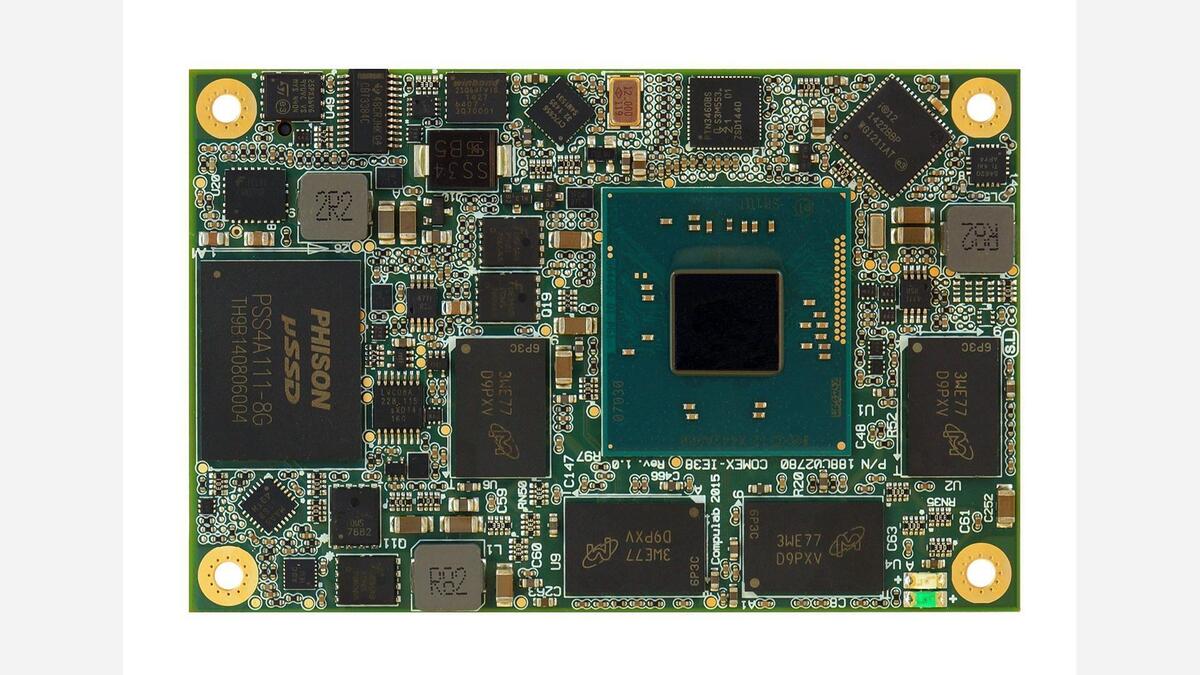NASA's Perseverance rover gives Intel's Atom CPU a chance to shine - cannadygles1968
Intel's underpowered Atom CPU has finally found some honor—on Red Planet. The lowly break off had a yobo time on Earth, winning the faintest of kudos for its walker execution. But its energy-sipping ways were obviously a good fit for a couple of figure out modules that National Aeronautics and Space Administration stacked into its $2.7 million Perseverance rover.
Intel aforementioned Monday that at that place are at to the lowest degree ii Atom SoCs enclosed deep down of Perseverance. The chip is the main central processor aboard a COMEX-IE38 computing module mature by Israel-based CompuLab.
The COMEX-IE38 is collective around Intel's 22nm Molecule E3800 and runs aweigh to 8GB of DDR3 and 64GB of store along with Gigabit ethernet, PCIe, SATA, USB and serial UARTs.
 Intel
Intel The COMEX-IE38 card aboard NASA's Perseverance lander stores and sends images from the probe and runs on the some-maligned Intel Corpuscle CPU.
It's long been a running joke that the Apollo moon missions used inferior computation power than a TI calculator, but anyone with memories of the Atom-powered Netbooks may think an Atom might have been even slower.
Atom might be the butt of jokes for hardware snobs, but the crazy affair is it's about 12 times faster than the chip that handles the main processing for the probe: A 1998-era PowerPC 750. That's a one-person-substance Saratoga chip flying at maybe 233MHz. The PowerPC 750 was used for the original iMac until Apple abandoned ship for Intel's x86 chips in 2006. In that case, information technology is BAE's RAD750 rated for 266 MIPS. If you doubt an Atom could run circles roughly the PowerPC: An Atom E3800 can hit 3,300 Million instructions per second.
Thus yeah, snark all you want about that Atom SoC, but information technology's actually one of the higher- performing chips alongside the probe. The COMEX-IE38 powers cardinal data storage units, which take all of the raw data from the probe's 23 cameras aside ethernet and handle the compression of the images before being sent to 480GB SSDs and then connected to NASA.
Short-bid contract?
If you're wondering wherefore a $2.7 billion space poke into would load down long-obsolete hardware, IT's not both regime low-bid contract rule at play (necessarily, anyway). IT's likely out-of-pocket to the radiation ohmic resistanc required of travelling the millions of miles to Mars and then operating under inhospitable circumstances. The RAD750, for example, has a price tag of about $280,000.
In the casing of the Atom-based COMEX-IE38, taxpayers got a deal, every bit Intel notes you can buy up them for about $150.
Source: https://www.pcworld.com/article/394482/the-nasa-perseverance-rover-uses-intels-atom-cpu.html
Posted by: cannadygles1968.blogspot.com


0 Response to "NASA's Perseverance rover gives Intel's Atom CPU a chance to shine - cannadygles1968"
Post a Comment